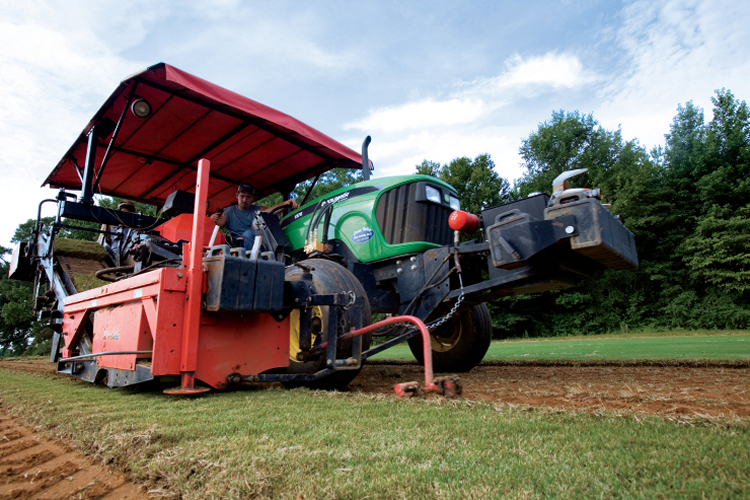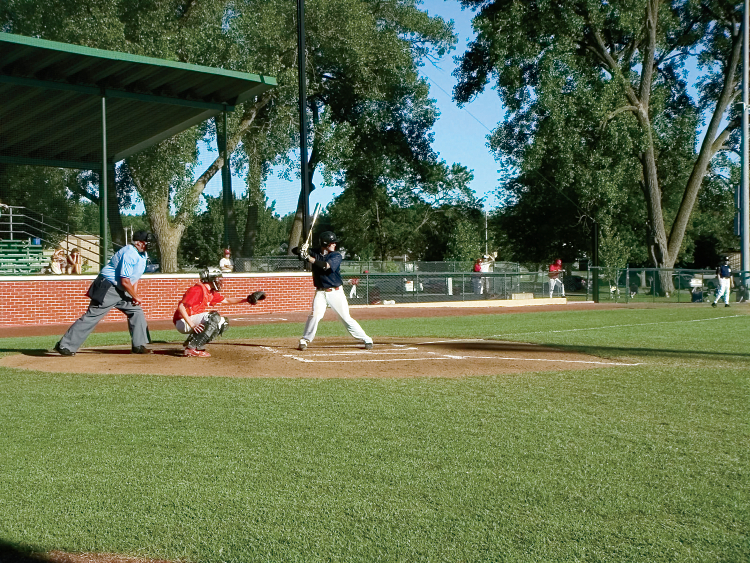Home > Georgia > Georgia Crops & Livestock > Georgia Turfgrass Industry Covers New Ground
Georgia Turfgrass Industry Covers New Ground
Measuring the economic impact of most agriculture sectors is fairly straightforward. Consider inputs versus outputs, the number of jobs in the industry and the total profits earned from the commodity. But with turfgrass, things aren’t so simple.
“It’s almost impossible to measure just how much of an influence this industry has on Georgia,” says Clint Waltz, turfgrass Extension specialist at the University of Georgia. “The only segment of the industry that is actually making a product is sod production, and sod is just scratching the surface.
He adds, “But the industry overall makes an incredible impact on the state economy. We’ve got about1.8 million acres across the state. That makes turfgrass one of our largest agriculture commodities, and we’re really underestimating the impact turf has on this state.”

The Four Main Players
There are four segments to the turfgrass industry: golf courses, sports fields, sod production and professional lawn care.
“Golf is big in Georgia,” Waltz says. “From the Masters in Augusta to the senior tournaments and the Tour Championship in September, golf is huge for the state in tourism but also for agriculture.”
But measuring the farm gate value of turf management at a golf course isn’t easy. The same goes for sports fields.
“From Little League to the Atlanta Braves and practice fields for the Atlanta Falcons, installing and maintaining safe and effective sports surfaces that ensure high performance and minimal injuries to athletes is a big part of this industry,” Waltz says. “But it’s also difficult to stick a number on.”
Together, these four segments contribute $778 million to the state economy each year and provide 8,700 jobs for Georgians. The majority of these jobs are in professional landscaping and sod production.
“Georgia has one of the biggest turf businesses in the U.S.,” Waltz says. “It is the biggest in the Southeast in acreages and number of producers.”
Grass of the Future
Few know Georgia turf as well as Patten Seed Company in Lakeland. First established as a seed- and fertilizer-selling general store in 1893, the company has grown to 10,000 acres of turfgrass and today excels in cutting-edge seed and sod development, trees, soil and even pecans and grafted seedlings.
Now operated by Jim Roquemore, Ben Copeland Sr. and Ben Copeland Jr., Patten Seed was a pioneer in the Centipede seed business, developing the Centi-Seed® brand in 1954 and the TifBlair™ Centipede and Zenith® Zoysia varieties in the 1990s. These seed and sod varieties are noted for their high germination rates, increased quality and less-expensive lawn establishment. Today, Patten Seed is in the forefront of developing and testing new, high-quality turf species and new growing techniques.
“Everyone in agriculture always has an eye on the future,” Waltz says. “Turfgrass is no different.”
Patten Seed and its Super-Sod® urban retailers just opened a new office in Fort Valley. Besides serving as a new sales center for the area, this site is an educational center for smart water use.
“The future for us is all about conservation,” Waltz says. “We are constantly working on research and development to improve cultivation and sustainability, stabilizing and improving our inputs while maintaining a quality product.”
Improvements in water conservation and pest management are the key, Waltz says, and UGAis at work breeding new cultivars of grass species that require less water and fewer pesticides.
“The thing we have to remember is the turf business is a quality business, not quantity. We can’t only be concerned with how many acres, it has to look good, and it has to be a safe and effective playing surface,” Waltz says. “And the future for us means creating more sustainable products and options.”





